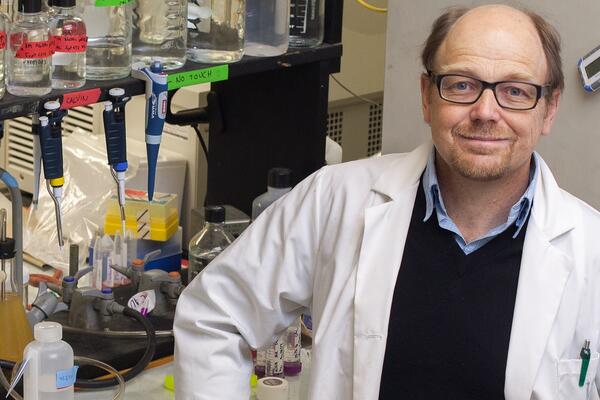
Unleashing a flood to understand the future
How ecosystems will survive extreme weather caused by climate change.

How ecosystems will survive extreme weather caused by climate change.
By Tenille Bonoguore For Communications & Public Affairs The Beverly Swamp is a jewel in Ontario’s Carolinian forest, its marshes, bogs and meadows rich in biodiversity.
The Beverly Swamp is a jewel in Ontario’s Carolinian forest, its marshes, bogs and meadows rich in biodiversity.
And this fall University of Waterloo professor Philippe Van Cappellen plans to flood it.
Dr. Van Cappellen is hoping for a hot, dry summer beforehand too, because he wants the sudden deluge to make as big an impact as possible on Beverly Swamp and its downstream watershed.
It promises to be a dynamic start to the academic year: Everyone from first year students to senior staff and faculty will be in the field collecting data.
The ultimate goal of Dr. Van Cappellen research is to understand the dynamics of an entire watershed so that water resources can be used and managed in an ecologically sound manner.
“We want to anticipate what issues may occur, then try to create ecologically-friendly solutions,” said Dr. Van Cappellen, the university’s Canadian Excellence in Research Chair in Ecohydrology.
“Nature teaches us there is a lot of resilience in ecosystems. If we can steer these processes, we could do what I call ecological engineering.”
Climate change is causing more extreme weather events like floods and droughts, but most hydrological models are based on average weather conditions. So this fall’s flood pulse experiment aims to see whether nutrients and contaminants behave differently under extreme, flood-like circumstances.
“Whatever we do as humans, water is essential,” he said, and not just environmentally.
“Most of our water consumption, at least in Canada, is for industrial purposes. It’s an important economic driver.”
It’s only recently that Waterloo has merged research in hydrology with that of aquatic ecology to create ecohydrology.
This wider scale, more integrated analysis of the coupled flows of water, nutrients and contaminants in river basins brings together four levels of research:
Work moves fluidly between levels. Observations in the field can guide the molecular work, lab experiments help build ecohydrological models, which, in turn, may identify key parameters to be measured at field sites.
“What I find exciting is to be able to go back and forward between the various levels,” Dr. Van Cappellen said.
The field of ecohydrology is not only exciting – it’s highly relevant as humans grapple with the social, economic and environmental implications of a changing climate.
“It’s combining very fundamental research that is, and should be, interesting on its own … and is also important for the way we live, the quality of life we have, and has big implications ultimately for social justice and economic development,” he said.
“Through doing good science, you can do something that’s important from a social viewpoint.”

Read more
Here are the people and events behind some of this year’s most compelling Waterloo stories

Read more
Discovery of a thick atmosphere on a lava world reshapes our understanding of rocky exoplanets

Dr. Brian Dixon, professor of biology at the University of Waterloo says there is a link between cold weather and getting sick. (University of Waterloo)
Read more
Waterloo researcher shares why we get sick when the mercury dips
The University of Waterloo acknowledges that much of our work takes place on the traditional territory of the Neutral, Anishinaabeg, and Haudenosaunee peoples. Our main campus is situated on the Haldimand Tract, the land granted to the Six Nations that includes six miles on each side of the Grand River. Our active work toward reconciliation takes place across our campuses through research, learning, teaching, and community building, and is co-ordinated within the Office of Indigenous Relations.